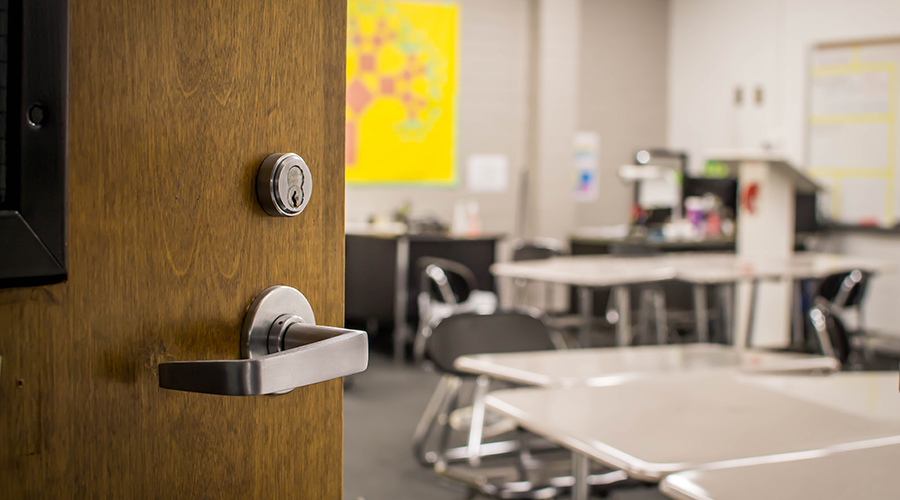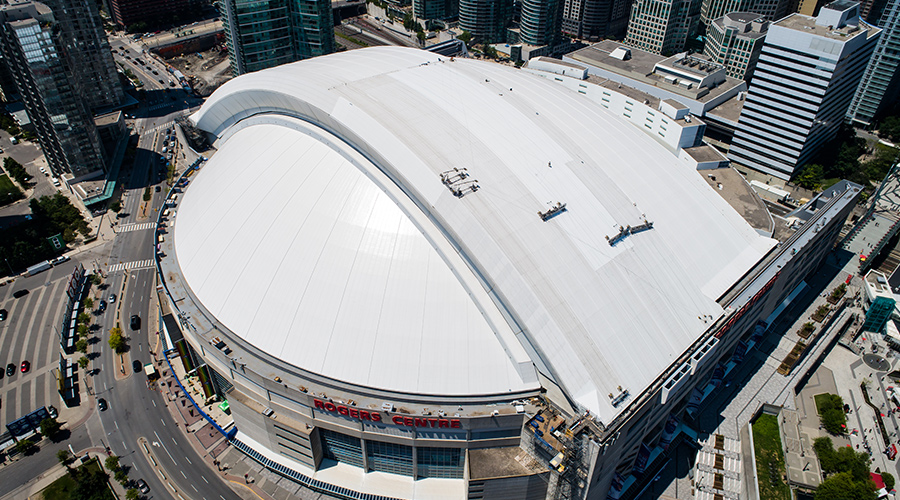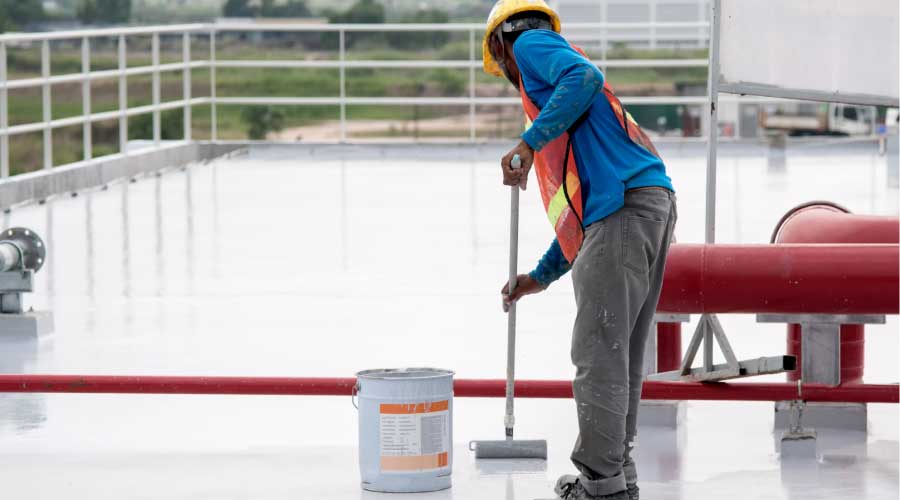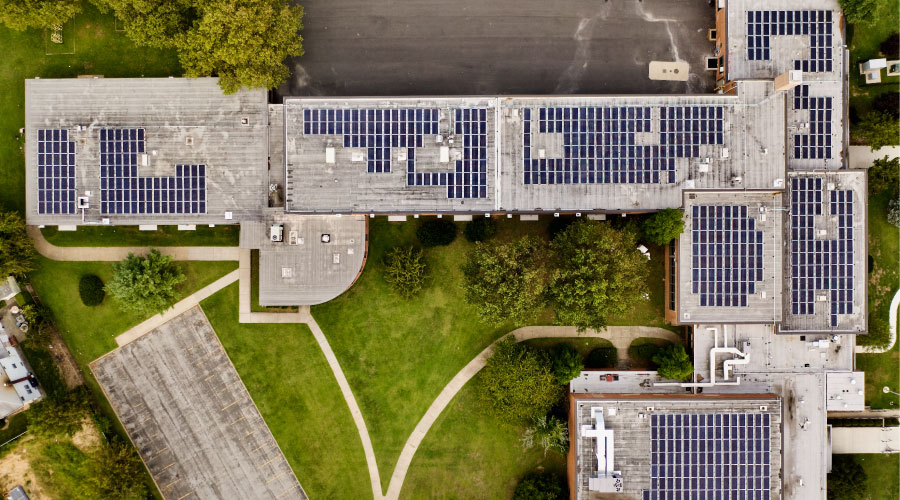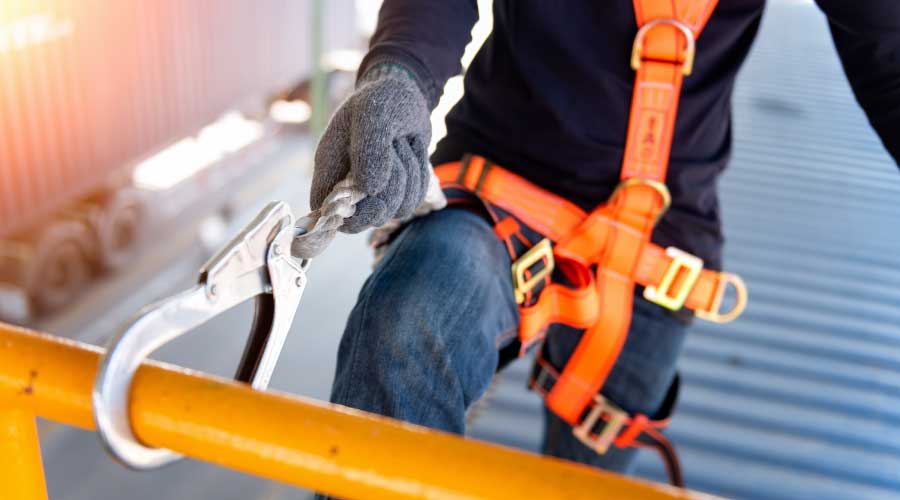How Wind Damages Roofs
When the wind is screaming, rain is driving down in five-gallon buckets, or hail is pinging off the ground like popcorn, you know your roof is taking a beating. But when the wind goes from shriek to howl, do you really know what's going on up there?
In facilities management, ignorance is never bliss. Preventive maintenance is the key to the longevity of any system, but the step before that is having a sense of what the system is undergoing. Understanding a little bit of what is physically happening on a roof during severe weather events can help staff inspecting a roof anticipate trouble areas, spot potential damage and catch small problems in time.
The list of hazards a roof system must contend with varies by roof type and building location, but two events are anathema to roofs everywhere: severe wind and hail. Water and its other forms (ice, snow, deluge) and temperature cycles also are heavy hitters.
Damaging Wind
Roofs are designed to resist the typical wind loads of their location, but no roof is likely to withstand the most extreme wind event: tornado. In between breezes and twisters is a whole range of wind speeds that incrementally damage the roof system.
As wind moves over a roof, its effect is not uniform. Certain regions will be subject to higher pressures, such as along the perimeter.
"What you'll find is that at the center portion of the roof you have the lower stresses," says Frank Laux, principal engineer and co-chair of CTLGroup's building and facilities practice group. "But at the corners and at the edges of the roof, typically by the very nature of the wind blowing across the roof, it exerts a higher pressure."
Depending on the way the wind blows, the shape of the roof and the location on the roof, there will be negative pressure — suction — or positive pressure — pushing, like when the wind slaps your face as you round a corner, says James Kirby, AIA, associate executive director of technical communications, National Roofing Contractors Association (NRCA). But most wind damage that occurs on roofs start on the edge of the roof systems, he says.
"Wind blowing over a roof isn't a problem until it starts to move materials," says Kirby. "Materials" may include the membrane itself or the shingles. Anywhere material is even a little bit loose, the suction of the wind is going to raise it up and then the wind can get below it and push it up. Once the underside of the roofing is exposed, rain can get in, but it also gives the wind more to grab on to.
"What you see is a peeling effect," says Kirby. For example, the edge of the roofing can start to lift up and in subsequent wind events gets pushed up and over a little more each time until a whole corner of the insulation is exposed.
The damage starts small and grows through repeated wind cycles, usually over time. To avoid this type of wind damage, make sure edge metal that makes the transition from the flat roof to a vertical wall is sufficiently strong for the location, height and expected wind speeds, Kirby says. Ballasted roofs can be scrubbed by the wind at the perimeter, moving the ballast, says Laux. It's important to check that the ballast has remained in an even layer across the span of the roof, and if not to spread it back out.
The other materials a significant wind event moves about — shards of glass, tree branches and so on — are perhaps the more damaging issue to consider, says Jim Hoff, research director for the Center for Environmental Innovation in Roofing.
"When people think about wind events they think, 'oh well, it could tear the roof off my building or my roof could come loose,'" he says. "But the biggest effect of wind events that I've seen is the potential for wind-blown debris to damage the roof." That means when inspecting the roof after a wind event, it's not enough to check that areas are tight and that attachments are still good. Investigating what might have blown onto or across the roof is also necessary, he says.
How Damage Is Done
Even in hurricane areas, Hoff says he saw very few roofs actually blow off. The roofs were still attached very solidly to the building, but were almost shredded with cuts and punctures from flying debris. He's seen roofs where the rooftop air conditioning units rolled across the roof "like leaves blowing in the wind. The roof was still there, but it was so terribly damaged."
Wind-blown debris also tends to accumulate and clog drains and downspouts. That could cause problems in the future, and facility managers might not realize that it had been caused by the earlier wind event, says Hoff.
Related Topics:






